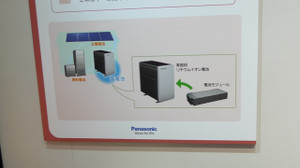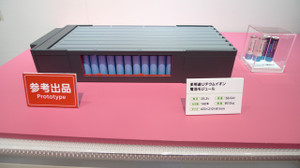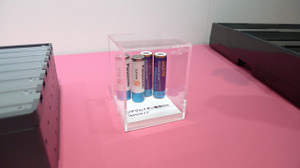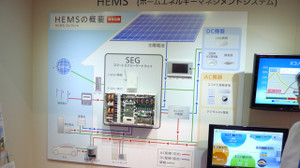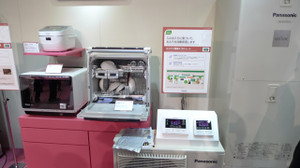Panasonic’s cost effective smart grid for consumer
Panasonic revealed two key products of smart grid for home use in a trade show held at Tokyo this week. The trade show “Eco Products 2010” is Japan’s largest one for manufacturers selling eco-friendly products. Major players in smart grid including Hitachi, Mitsubishi Electric, Toshiba and Panasonic had their booth in the venue Tokyo Big Sight.
One key product of Panasonic is a small sized lithium ion battery unit with 5 kWh capacity appropriate to place outside the house.
“This battery unit enables to run all the appliances at average home for half a day”, Panasonic’s senior engineer hoping to stay unnamed said. If so, consumers can store cheap electricity at night and use it in daytime. This product is ready to sell in somewhere 2011 at an affordable price.
This battery unit consists of four battery modules which have 140 mass production lithium ion battery cells each. He said, “using mass production lithium ion battery cell is much cheaper than using larger battery cell for specific purpose.” As shown in the photo, mass production lithium ion battery cell is relatively small, slightly larger than consumer use battery cell.
Another key product is “Smart Energy Gateway” (SEG) for Home Energy Management System (HEMS). HEMS is a common concept which stands for overall intelligent control of home appliances and other electric devices in a home. A typical product of HEMS in an early stage is a home energy display which enables users to see actual usage of electricity. But it doesn’t control power consumption of home appliances at all. Consumers should do it manually.
As to Panasonic’s SEG, it can control power consumption of all the appliances and power generation of home equipment (combined heat and power or PV) as well as battery charging. Also, it converts AC to DC, or DC to AC accordingly. For example, generated electricity from PV unit is DC, so it should be converted into AC before used by usual appliances. Otherwise, providing lower voltage DC is better for lighting unit, so electricity needs DC - DC conversion. All these things are managed by Panasonic’s SEG.
Since Panasonic is a manufacturer of various kinds of home appliances, the company can produce appliances which can talk with its SEG. But the engineer admitted that the company needed to comply with a certain international standard before expanding its smart grid at home business.
In smart grid at home area, several cases of consumer’s backlash in which they complain about the benefit of smart meter are reported. Smart meter alone may not be enough for consumer to understand cost effectiveness of smart grid at home. Panasonic’s battery and SEG have some potential to change consumer’s recognition, because it can reduce power consumption automatically. But finally, it depends on the price.

